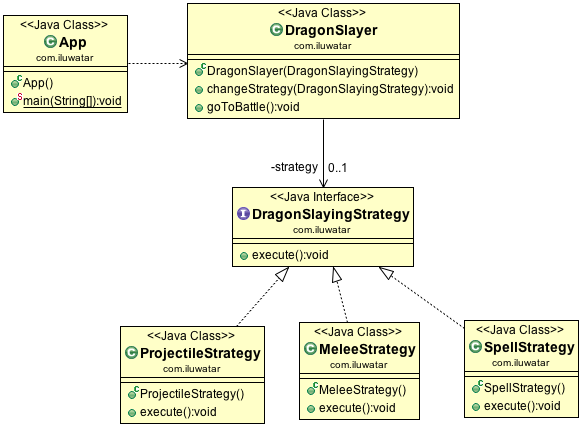* Moves saga to Java 11 * Moves semaphore to Java 11 * Moves servant to Java 11 * Moves serverless to Java 11 * Moves service-layer to Java 11 * Moves service-locator to Java 11 * Moves sharding to Java 11 * Moves singleton to Java 11 * Moves spatial-partition to Java 11 * Moves specification to Java 11 * Moves state to Java 11 * Moves step-builder to Java 11 * Moves strategy to Java 11 * Moves subclass-sandbox to Java 11 * Fixes checkstyle issues
layout, title, folder, permalink, categories, tags
| layout | title | folder | permalink | categories | tags | |
|---|---|---|---|---|---|---|
| pattern | Strategy | strategy | /patterns/strategy/ | Behavioral |
|
Also known as
Policy
Intent
Define a family of algorithms, encapsulate each one, and make them interchangeable. Strategy lets the algorithm vary independently from clients that use it.
Class diagram
Applicability
Use the Strategy pattern when
- Many related classes differ only in their behavior. Strategies provide a way to configure a class either one of many behaviors
- You need different variants of an algorithm. for example, you might define algorithms reflecting different space/time trade-offs. Strategies can be used when these variants are implemented as a class hierarchy of algorithms
- An algorithm uses data that clients shouldn't know about. Use the Strategy pattern to avoid exposing complex, algorithm-specific data structures
- A class defines many behaviors, and these appear as multiple conditional statements in its operations. Instead of many conditionals, move related conditional branches into their own Strategy class
